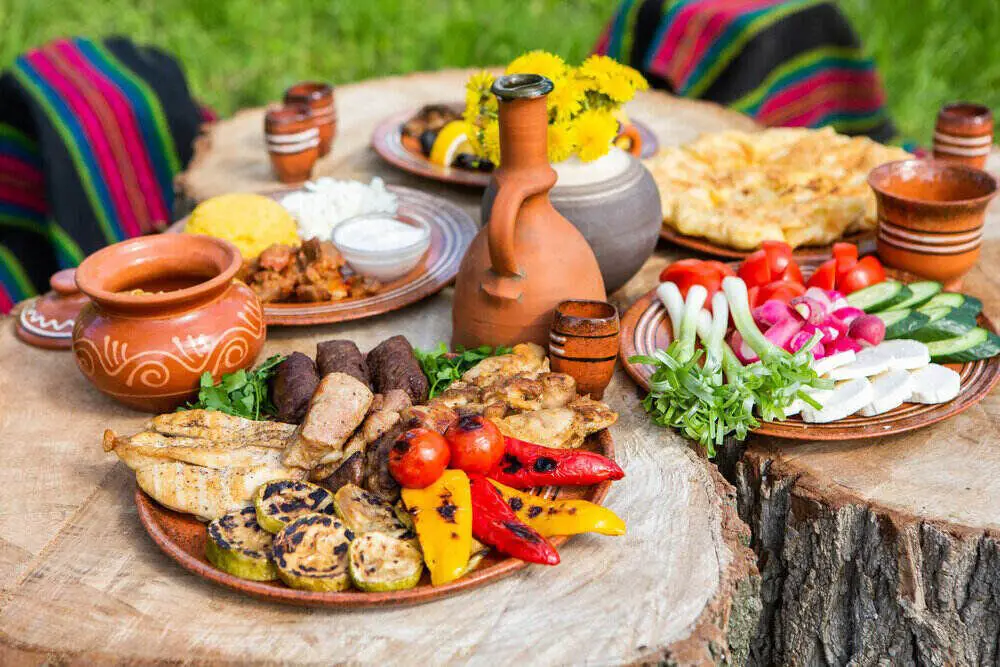Take Me to the Recipes!
Romanian cuisine is a captivating blend of flavors that mirrors the country’s diverse history, climate, and culinary traditions. Nestled in southeastern Europe, Romania boasts a temperate-continental climate, picturesque landscapes, and a population of around 19 million.
As we delve into Romanian food culture, let’s uncover the fascinating interplay of history, geography, and tradition that has shaped this gastronomic treasure trove.
Romanian Cuisine – Key Takeaways
- Diverse Influences: Romanian Recipes reflects a tapestry of influences, from Ottoman and Austro-Hungarian to Balkan and Slavic.
- Emphasis on Fresh Ingredients: The use of locally sourced, fresh ingredients is a hallmark of Romanian dishes.
- Historical Significance: The cuisine bears the imprints of Romania’s complex history, with each region contributing unique flavors.
- Hearty and Flavorful: Romanian dishes have hearty portions and rich, savory flavors.
- Influence of Seasons: The cuisine deeply connects to the seasons, with dishes adapting to the availability of ingredients.
- Celebratory Traditions: Many Romanian dishes associate with celebrations, weddings, and festivals.
- Culinary Heritage: Romania’s culinary traditions pass down through generations, preserving authenticity.
Take Me to The Recipes
You may also Enjoy the Following Articles
- North and South American Cuisine – A Culinary Expedition
- European Cuisine: Savor the Continent’s Best Culinary Secrets!
- African Cuisine: Discover the Bold Flavors & Global Charm!
- Asian Cuisine Unlock its Secrets – Taste, Health & Global Influence!
- Oceania Cooking: A Culinary Journey Through the Pacific
Where is Romania?

Romania (In Romanian: România) is a country located in Eastern Europe with its capital Bucharest. The Danube River flows in the south of the country. Romania is one of the Balkan countries, located in the north of Balkans.

Index of Contents
- Take Me to The Recipes
- Romanian History and Its Impact on Cuisine
- How Romania’s Climate and Geography Influences Cuisine
- Understanding the Essence of Romanian Recipes
- Romanian Culinary Traditions
- Exploring Romanian Ingredients: The Flavors of Romanian Cuisine
- The Health Implications of Romanian Food
- Romanian Cuisine – Great Recipes to Try at Home
- Conclusion
- FAQ’s
Savor iconic Romanian Cuisine – Click on each tantalizing picture to open up the Menu
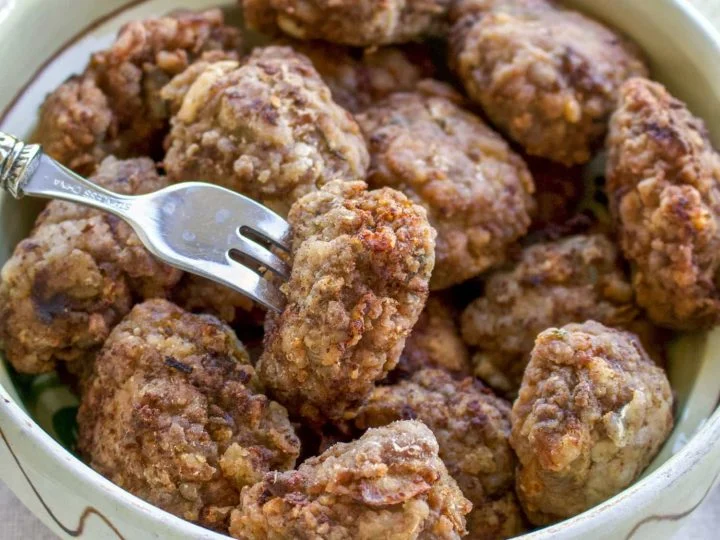
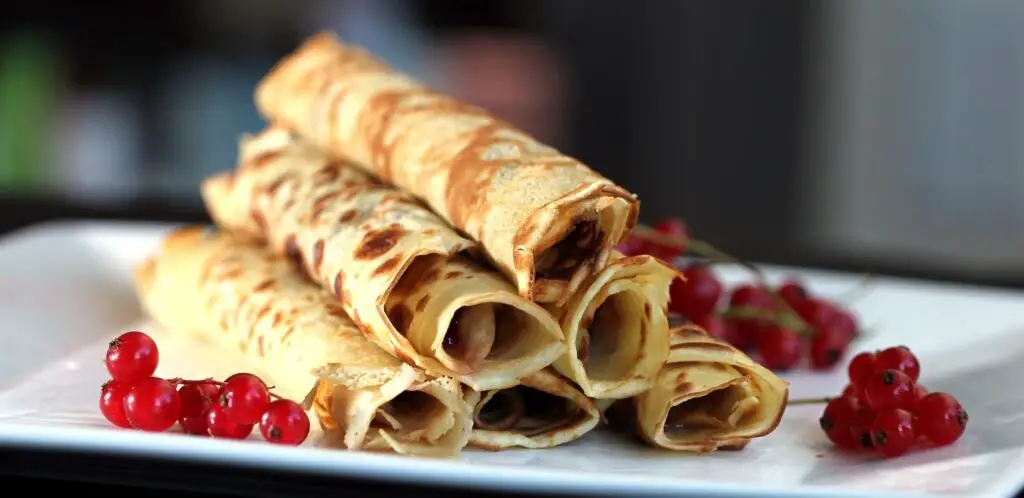
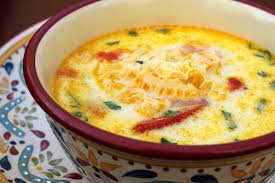
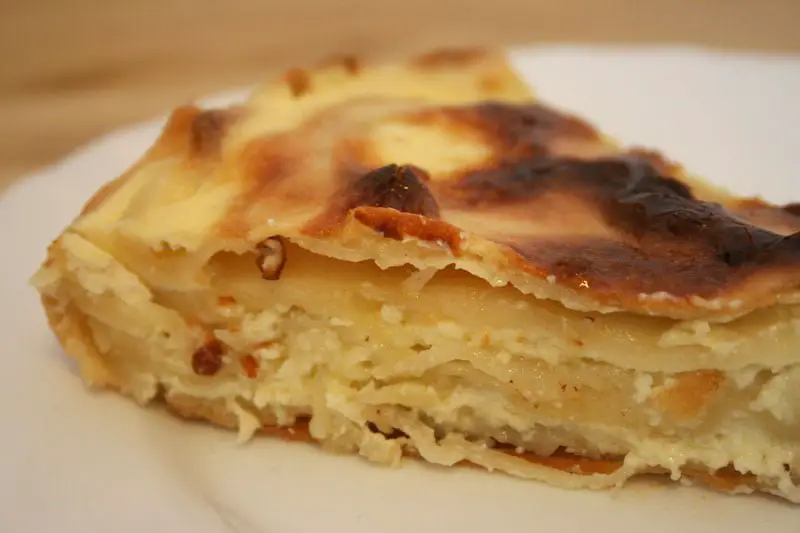
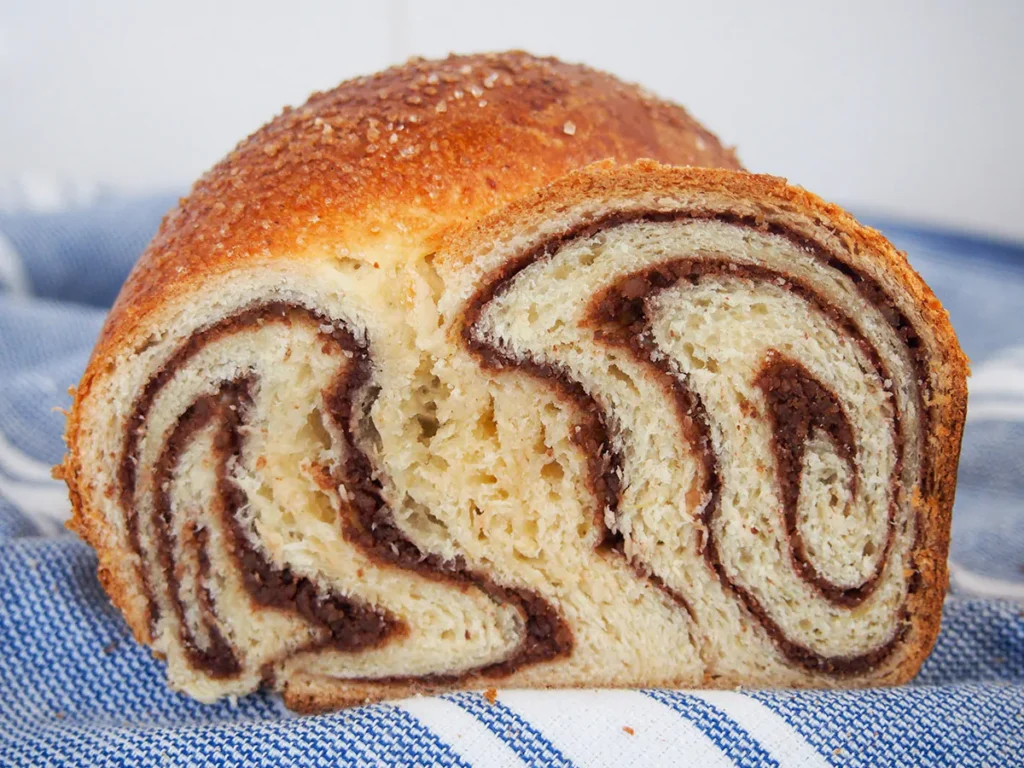
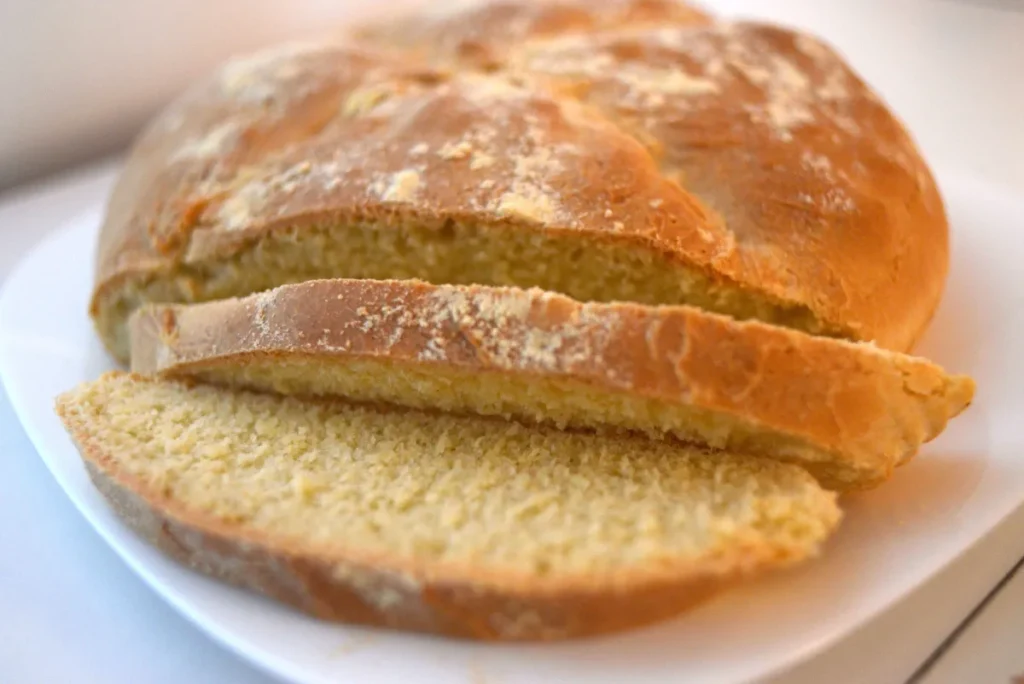
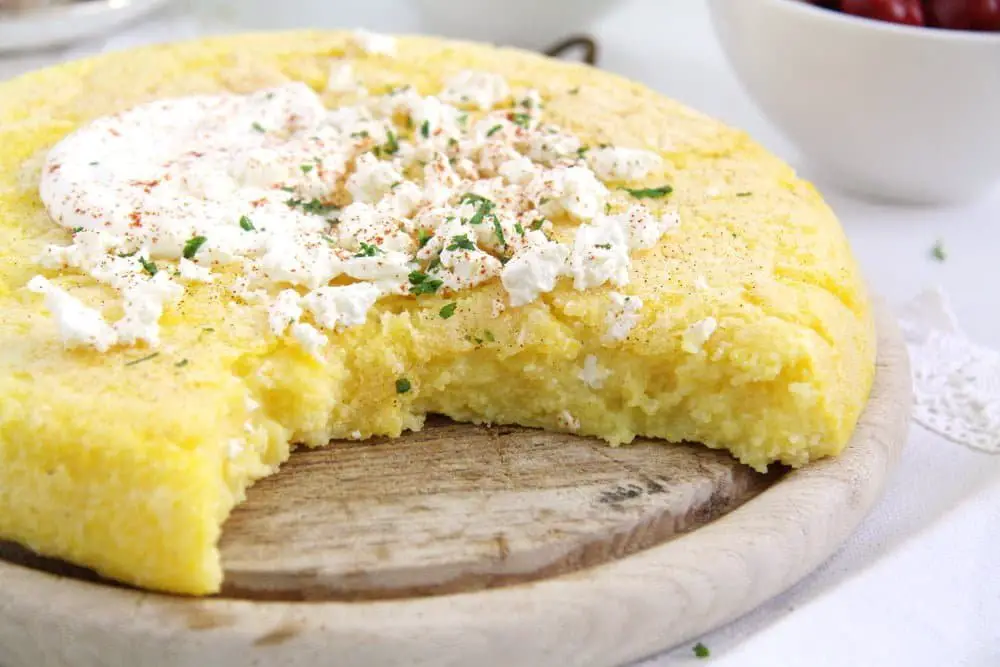
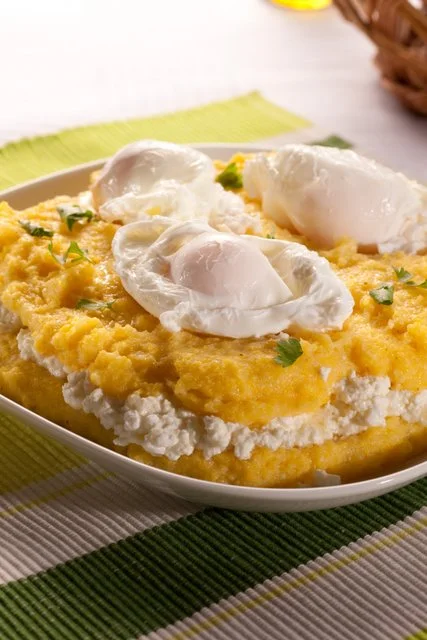
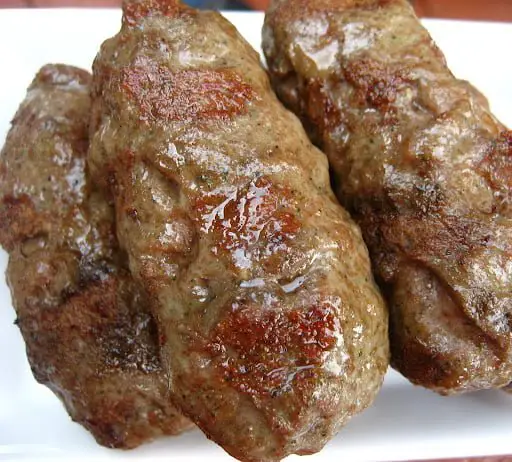
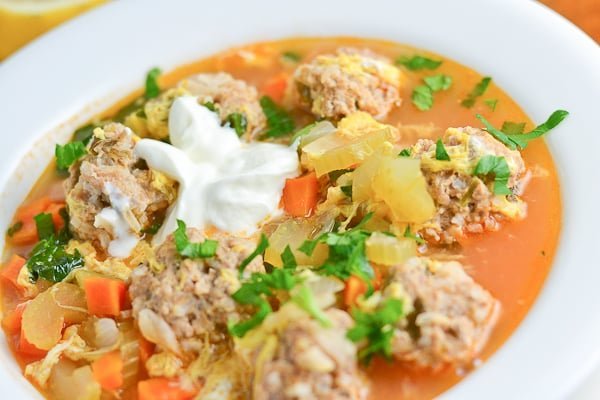
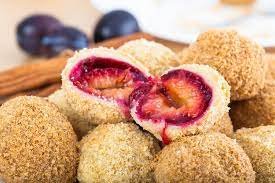
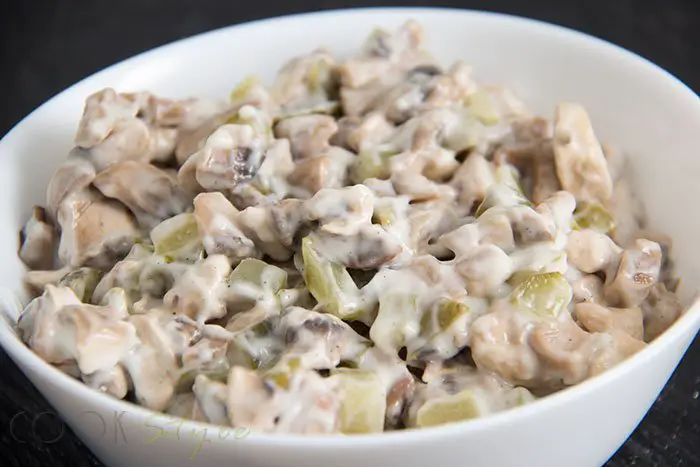
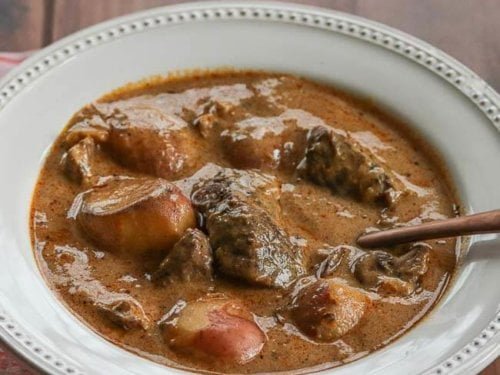
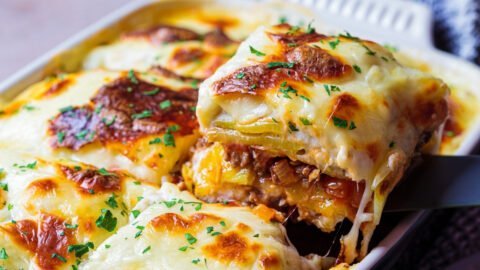

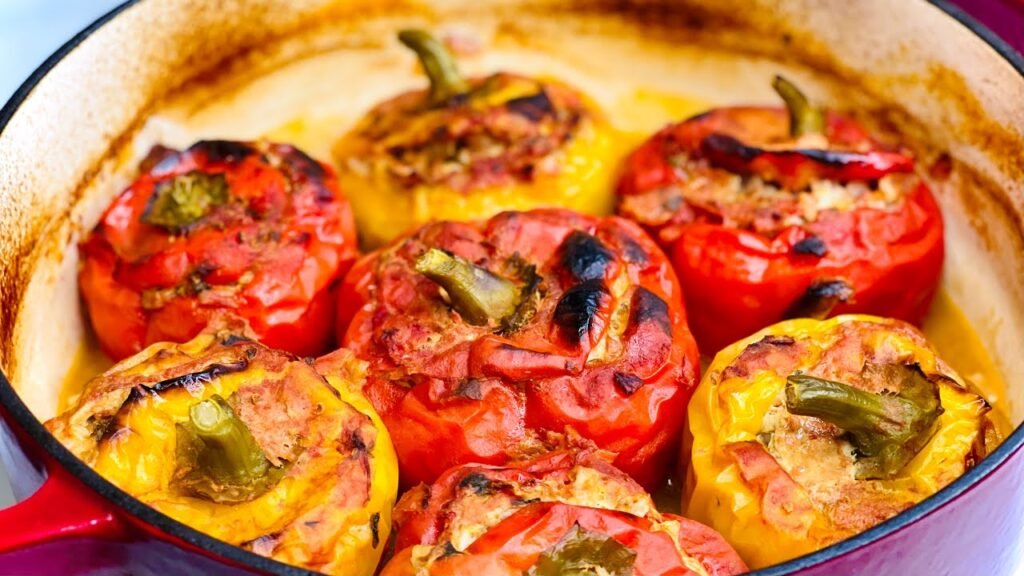
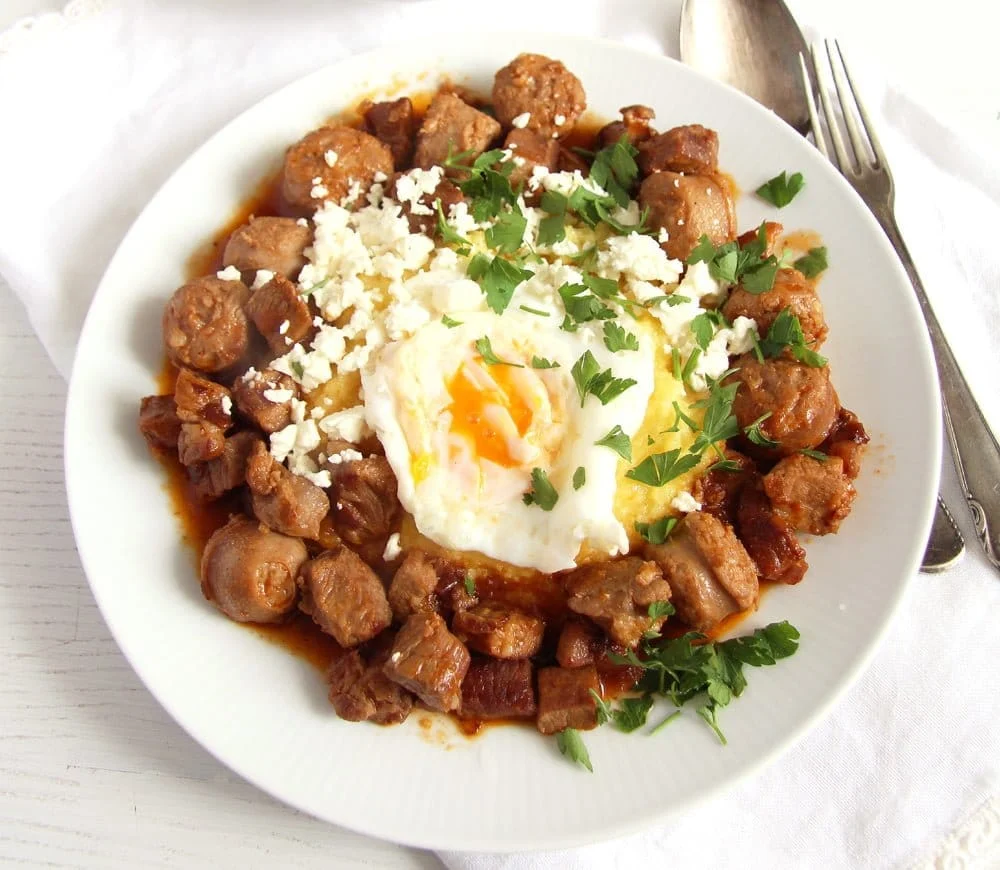
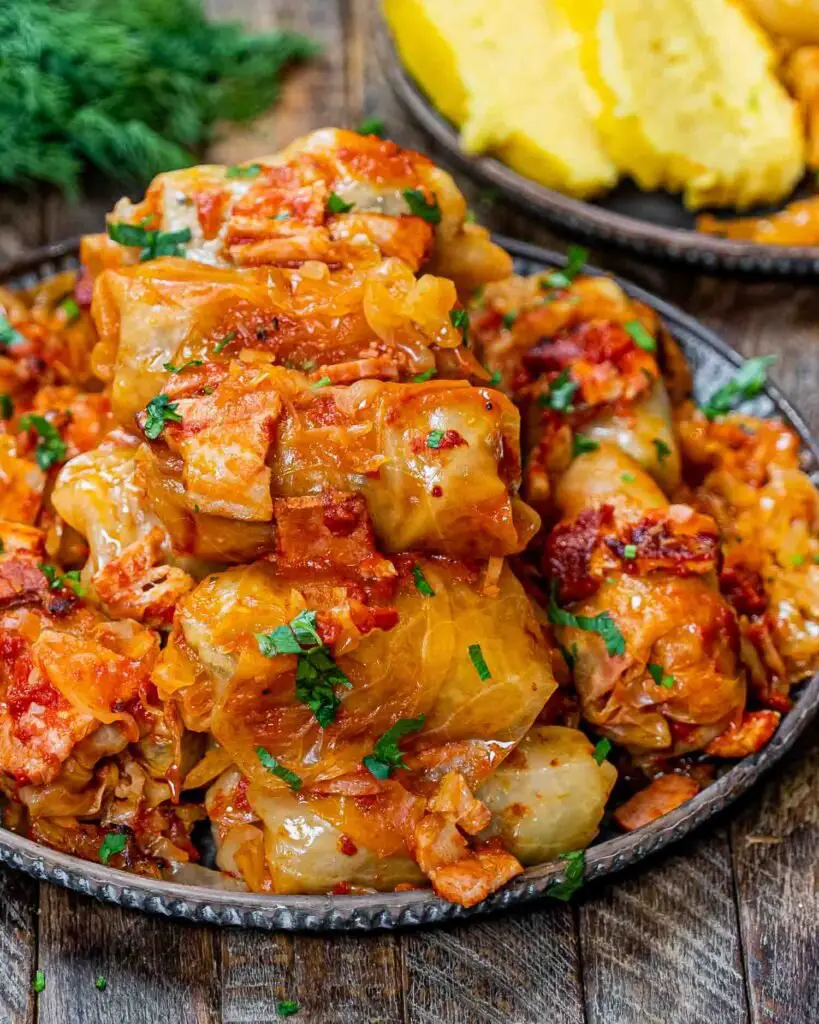
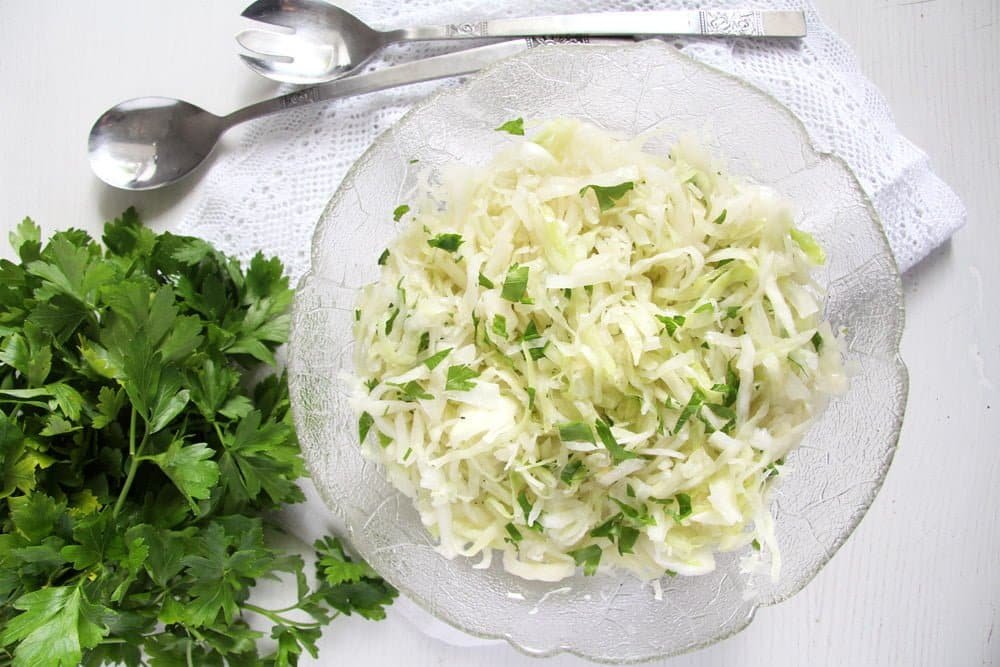
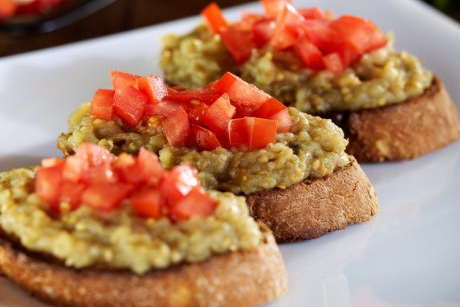
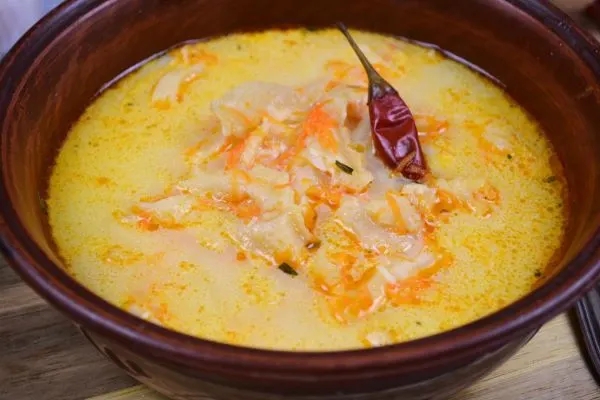

Romanian History and Its Impact on Cuisine
The history of Romania is rich and diverse, shaped by various influences from neighboring cultures and civilizations. The country’s cuisine reflects this historical tapestry, combining elements from ancient Dacian traditions, Roman colonization, Byzantine influence, Ottoman rule, and more recent Western European and Slavic influences. Let’s explore key historical periods and their impact on Romanian cuisine:
Romanian History – Ancient Dacia and Roman Occupation (c. 106 AD – 271 AD)

- The Dacians, the indigenous people of the region, had a primarily agrarian lifestyle, cultivating cereals, fruits, and vegetables.
- The Roman conquest brought new culinary elements, such as the use of olive oil, wine, and various spices.
Romanian History – Migration Period and Byzantine Influence (c. 271 AD – 13th century)

- The Great Migrations and the arrival of various migratory groups brought new culinary practices.
- Byzantine influence introduced Eastern Orthodox Christianity and culinary customs like fasting and traditional dishes associated with religious celebrations.
Romanian History – Ottoman Rule (14th century – 19th century)

- The Ottoman Empire dominated the region, influencing Romanian cuisine with dishes like sarmale (cabbage rolls stuffed with meat and rice) and mămăligă (cornmeal porridge).
- Turkish spices and cooking techniques left a lasting impact, contributing to the diverse flavor palette of Romanian cuisine.
Phanariotes and Western Influences (18th century – 19th century)
- The Phanariotes, a group of Greek rulers, brought some Mediterranean influences to Romanian cuisine.
- Western European culinary elements, such as the use of certain herbs and cooking methods, also made their way into the local culinary repertoire.
Union of the Principalities and Modern Romania (19th century)
- The union of Wallachia and Moldavia in 1859 laid the foundation for modern Romania.
- Urbanization and the emergence of a middle class led to increased culinary diversity, with access to a broader range of ingredients and cooking styles.
Communist Era (1947 – 1989)

- The communist period brought significant changes to Romanian society, including the collectivization of agriculture.
- The emphasis on self-sufficiency and limited resources during this time influenced a more straightforward and resourceful approach to cooking.
Post-Communist Era (1989 – present)
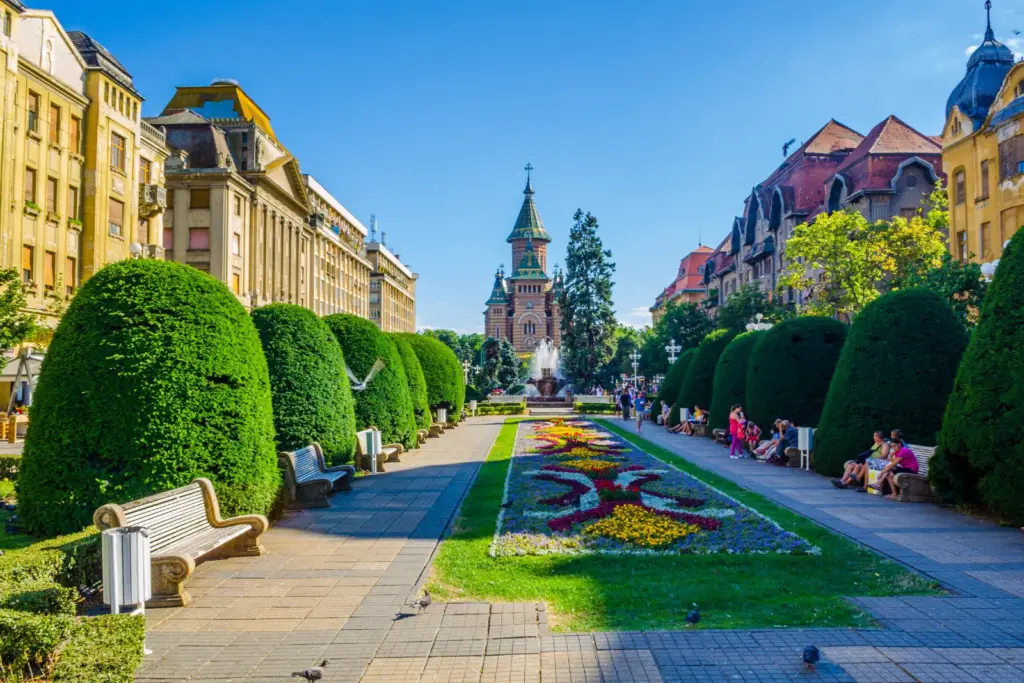
- The post-communist period saw a revival of traditional culinary practices and the incorporation of global influences.
- Increased access to a variety of ingredients, international culinary trends, and a renewed interest in traditional recipes contributed to the evolution of Romanian cuisine.
Today, Romanian cuisine is characterized by a mix of flavors, ranging from hearty and rustic dishes to more refined and cosmopolitan offerings. Traditional dishes remain popular, and the culinary landscape continues to evolve, incorporating both historical influences and contemporary trends.
How Romania’s Climate and Geography Influences Cuisine
Romania’s climate and geography have a significant influence on its cuisine, which is a diverse blend of different dishes from several traditions. Here are some ways how:
Romania’s location
Romania’s location at the crossroads of Central Europe and Eastern Europe has made it a melting pot of different culinary traditions, such as Turkish, Greek, and Austrian.
Romanian Landscape
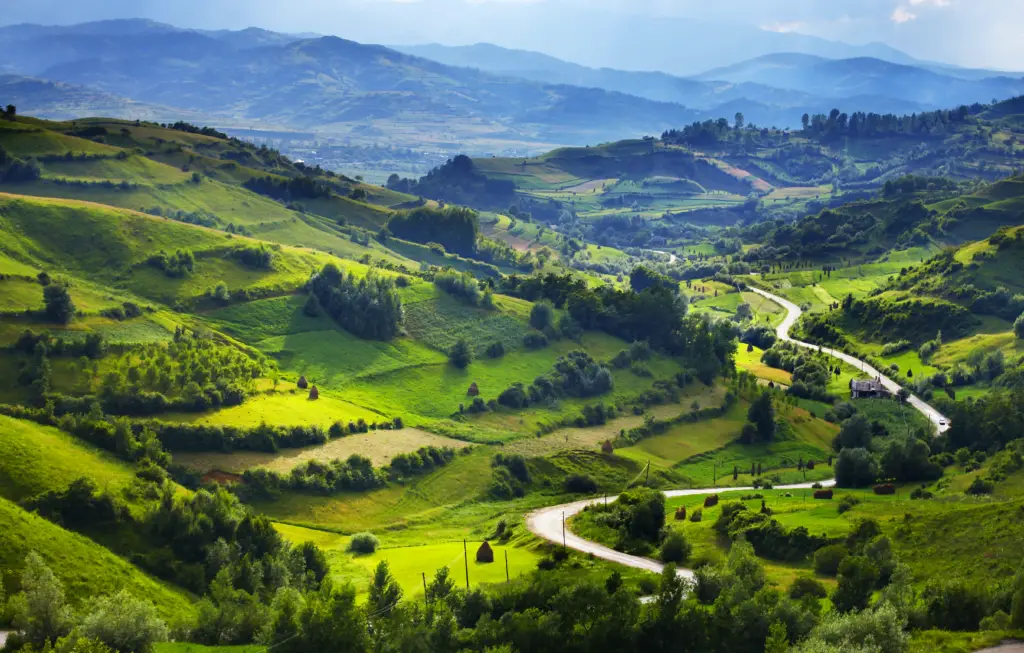
Romania’s diverse landscape, with fertile plains, mountains, and a long coastline, also plays a significant role in shaping its cuisine.
The Danube River, which runs through Romania, is an important waterway for transportation and trade, as well as a source of fish and other aquatic products.
The mountains provide natural resources such as mushrooms, berries, and herbs, as well as game animals such as deer and boar. The plains are rich in crops such as wheat, corn, potatoes, and sunflowers, which are used to make bread, polenta, and oil.
The coastline offers access to the Black Sea, which is home to various seafood dishes such as fish soup, fried mussels, and stuffed squid.
Romanian Climate

Romania’s climate, which is temperate and continental, also affects its cuisine. The four seasons bring different types of fruits and vegetables, which are often preserved by pickling, drying, or fermenting.
The cold winters require hearty and warming dishes, such as soups, stews, and meat-based dishes. The hot summers call for lighter and refreshing dishes, such as salads, cold soups, and dairy products.
In summary, Romania’s cuisine is a reflection of its climate and geography, as well as its history and culture. It offers a variety of flavors and dishes that can satisfy any palate. 😊
References
- Local Cuisine in Romania – USCIS Guide
- Romania – Traditions, Cuisine, Culture | Britannica
- Romanian cuisine – Wikipedia
Understanding the Essence of Romanian Recipes
The essence of Romanian recipes is the combination of simplicity and diversity, influenced by the country’s history, geography, and culture. Romanian cuisine is a fusion of different culinary traditions, such as Turkish, Greek, German, Hungarian, and Russian, that have left their mark on the local dishes.
Romanian recipes also reflect the seasonal availability of fruits and vegetables, as well as the regional specialties of the different provinces. Some of the most common ingredients in Romanian recipes are cornmeal, cabbage, pork, cheese, eggs, sour cream, and herbs.
Romanian recipes are often hearty, comforting, and flavorful, with a balance of sweet and sour tastes. Some of the most popular Romanian dishes are:
- Sarmale: cabbage rolls stuffed with minced pork, rice, and herbs, cooked in a tomato sauce and served with sour cream and polenta.
- Mamaliga: cornmeal porridge that can be eaten soft or hard, topped with cheese, sour cream, or butter, or served as a side dish with meat or vegetables.
- Cozonac: sweet bread with a swirl of nuts, raisins, and cocoa, baked for special occasions such as Christmas and Easter.
- Ciorba: sour soup made with various meats, vegetables, and herbs, flavored with vinegar or lemon juice.
- Placinta: pastry filled with cheese, apples, pumpkin, or meat, baked or fried and sprinkled with sugar or sour cream.
Romanian Culinary Traditions
The culinary traditions are a rich and diverse expression of the country’s history, geography, and culture.
Romanian cuisine is influenced by various cuisines from neighboring regions, such as Turkish, Greek, Hungarian, and German, but it also has its own distinctive features and flavors. Some of the main characteristics of Romanian culinary traditions are:
Sourness
The use of sourness as a key element in many dishes, such as soups, salads, and sauces. Sourness is achieved by adding vinegar, lemon juice, sauerkraut juice, or borș (a fermented bran liquid) to the food.
Pork
The preference for pork as the main meat, especially in winter dishes. Pork is often smoked, cured, or roasted, and used to make sausages, bacon, ham, and other delicacies.
Dairy Products
The abundance of dairy products, such as cheese, sour cream, yogurt, and butter, which are used to enrich and flavor various dishes, such as mamaliga (cornmeal porridge), placinta (filled pastry), and cozonac (sweet bread).
Seasonal and Regional Variation of Fruits and Vegetables
The seasonal and regional variation of fruits and vegetables, which are often preserved by pickling, drying, or fermenting for later use.
Some of the most common fruits and vegetables in Romanian cuisine are cabbage, potatoes, corn, tomatoes, peppers, onions, garlic, apples, plums, and grapes.
Bread as a Staple Food
The importance of bread as a staple food, which is usually homemade and served with every meal. Bread is also used to make croutons, dumplings, or toast.
Some of the most popular and traditional Romanian dishes are:
- Sarmale: cabbage rolls stuffed with minced pork, rice, and herbs, cooked in a tomato sauce and served with sour cream and polenta.
- Ciorba de burta: tripe soup with vegetables and herbs, flavored with vinegar or lemon juice and served with sour cream and garlic sauce.
- Mici: grilled minced meat rolls seasoned with garlic, paprika, and herbs, served with mustard and bread.
- Salata de vinete: roasted eggplant salad with onions, garlic, and oil, served as a spread or a side dish.
Exploring Romanian Ingredients: The Flavors of Romanian Cuisine
Romanian cuisine relies on a distinct set of ingredients that contribute to its unique flavors. From the earthy taste of mămăligă to the savory goodness of mici (grilled sausages), the ingredients used showcase the country’s agricultural richness.
The Health Implications of Romanian Food
The health implications of Romanian food depend on the type, quantity, and frequency of consumption. Romanian food can be both beneficial and harmful for health, depending on how it is prepared and consumed.
Possible Health Implications of Romanian food.
The cuisine can provide essential nutrients, such as protein, fiber, vitamins, and minerals, from various sources, such as cereals, fruits, vegetables, dairy products, and meat. These nutrients are important for maintaining good health and preventing deficiencies.
Romanian food can also be high in saturated fat, cholesterol, salt, sugar, and alcohol, which can increase the risk of chronic diseases, such as cardiovascular disease, diabetes, obesity, and hypertension.
The seasonality and availability of fruits and vegetables influence the cuisine. These affect the intake of antioxidants, phytochemicals, and other beneficial compounds. These compounds can help protect against oxidative stress, inflammation, and cancer. Therefore, it is advisable to consume fresh, local, and organic fruits and vegetables whenever possible.
The food can also reflect the cultural and social aspects of the country, which can have positive effects on mental and emotional health. Food can be a source of pleasure, comfort, identity, and belonging, as well as a way of expressing and sharing traditions, values, and emotions.
References
Romanian Cuisine – Great Recipes to Try at Home
Introduction: Romanian cuisine is a delightful journey for the taste buds, offering a wide array of flavors that capture the essence of the country. Here are some recipes to try at home, allowing you to experience the warmth and tradition of Romanian cooking.
Romanian Recipe – Mămăligă (Polenta)

History and Background: Originating from Romanian peasants, mămăligă has become a staple, often referred to as “the bread of the poor.”
Romanian Cuisine – Mămăligă (Polenta) Ingredients
- Cornmeal
- Water
- Salt
Romanian Cuisine – Mămăligă (Polenta) Recipe
- Boil water and salt.
- Gradually add cornmeal, stirring constantly.
- Cook until thickened.
- Mold and serve warm.
Pair with a robust red wine or a traditional Romanian tuică (plum brandy).
Romanian Recipe – Ciorbă de Burtă (Tripe Soup)
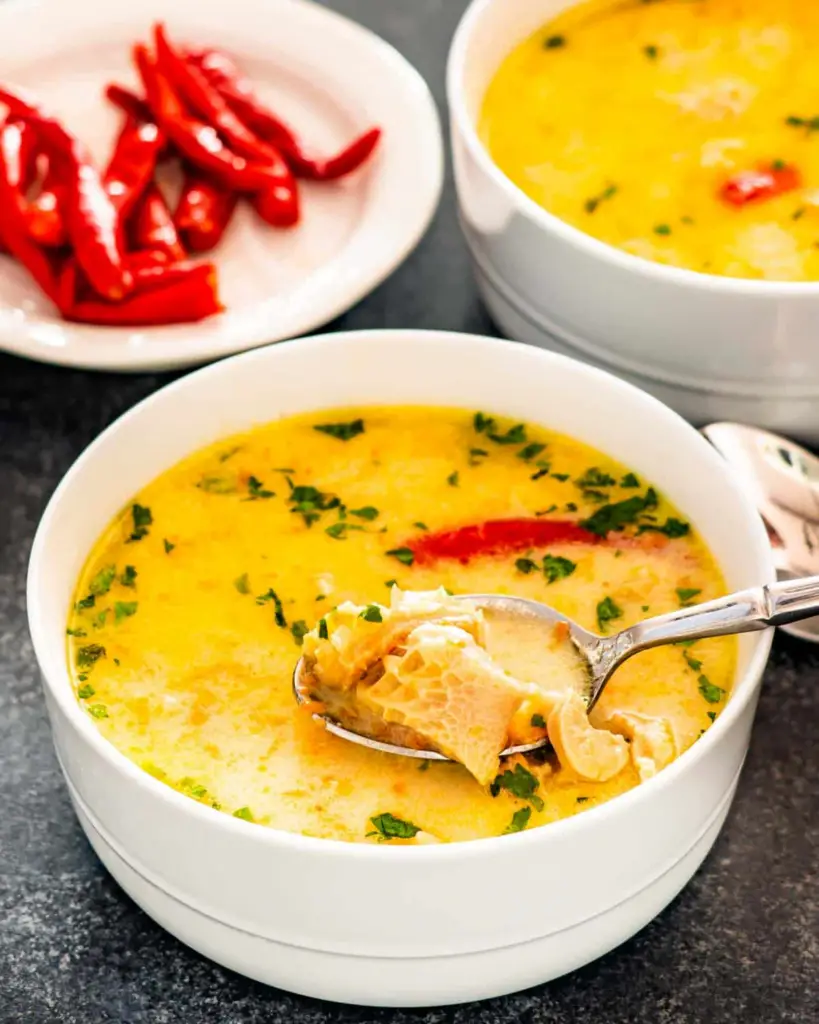
History and Background: A traditional soup with Turkish influences, ciorbă de burtă is often consumed to cure hangovers.
Romanian Cuisine – Ciorbă de Burtă (Tripe Soup) Ingredients
- Tripe
- Vegetables
- Sour cream
Romanian Recipe – Ciorbă de Burtă (Tripe Soup)
- Boil tripe until tender.
- Add vegetables and simmer.
- Serve hot with a dollop of sour cream.
Enjoy with a crisp white wine or a refreshing Romanian beer.
Romanian Recipe – Sarmale (Cabbage Rolls)
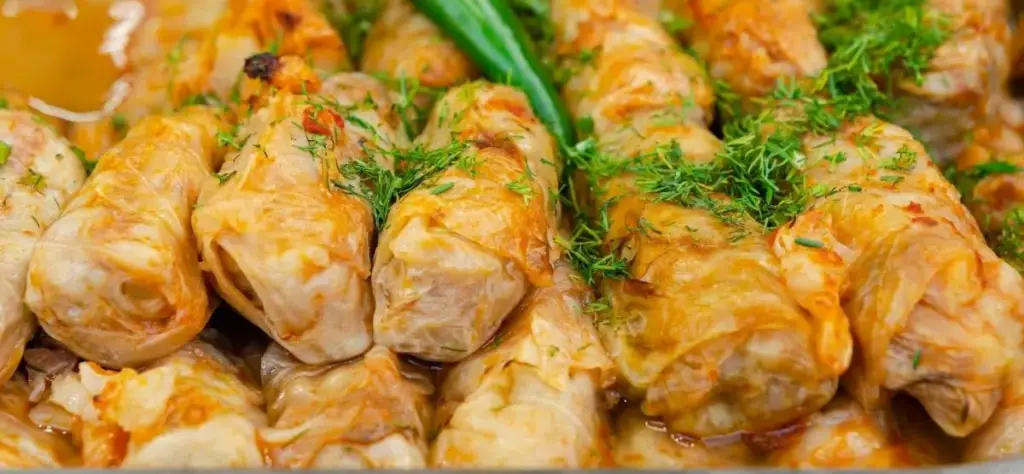
History and Background: Sarmale has its roots in Turkish cuisine and is a staple during Christmas and weddings. The Romanian word “sarma” is borrowed from the Turkish language – sarmak, where it means “to wrap”.
Romanian Cuisine – Sarmale (Cabbage Rolls) Ingredients
- Cabbage leaves
- Minced pork
- Rice
Romanian Recipe – Sarmale (Cabbage Rolls)
- Prepare cabbage leaves.
- Mix minced pork and rice.
- Roll mixture in cabbage leaves.
- Slow-cook in tomato sauce.
Serve with a full-bodied red wine or a glass of ţuică for an authentic experience.
Romanian Recipe – Mici (Grilled Sausages)
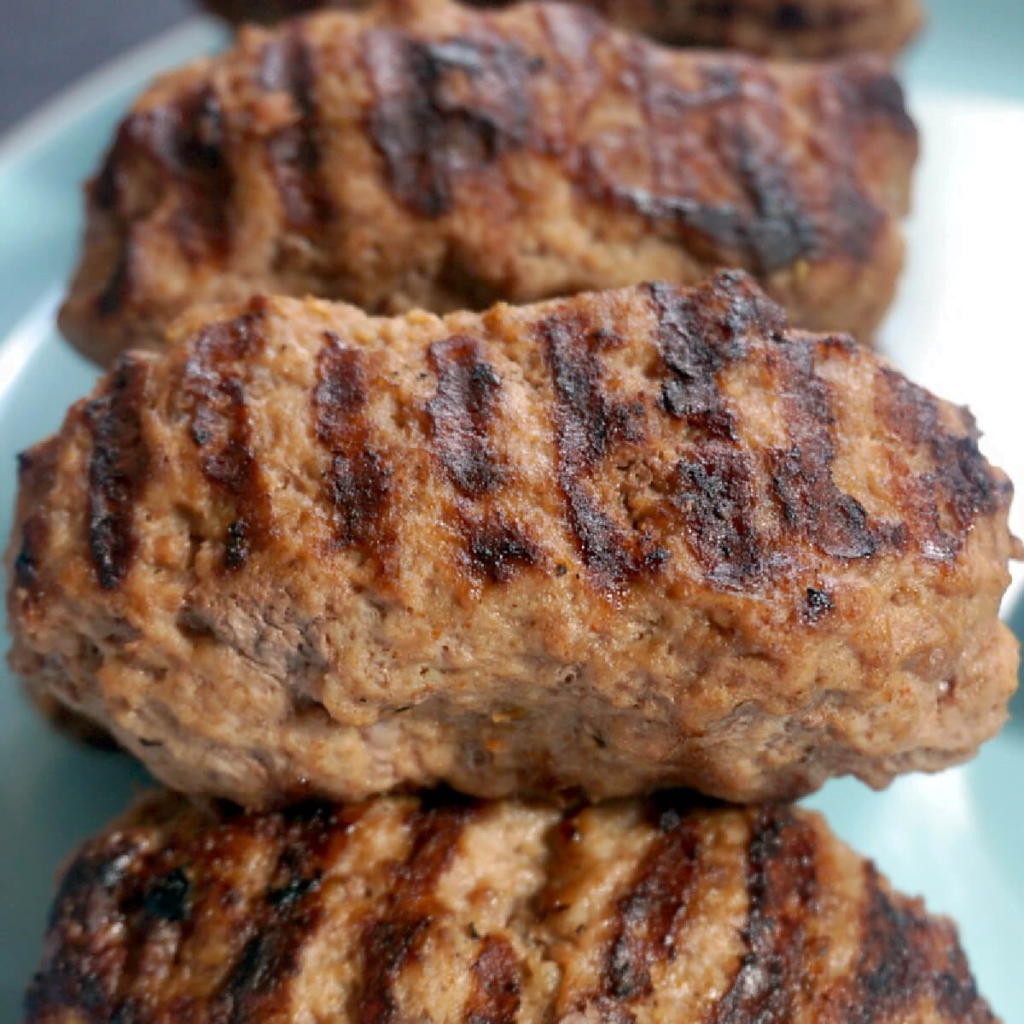
History and Background: Derived from the Middle Eastern mititei, mici are popular street food and a must-have during barbecues.
Romanian Cuisine – Mici (Grilled Sausages) Ingredients
- Minced meat (pork and beef)
- Garlic
- Spices
Romanian Recipe – Mici (Grilled Sausages)
- Mix minced meat with garlic and spices.
- Shape into sausages.
- Grill until golden brown.
- Serve hot with mustard.
Complement with a light beer or a glass of traditional Romanian palincă.
Romania Food – Salata de vinete

History and Background:
Salata de vinete, or Romanian Eggplant Salad, is a beloved dish with roots in Romanian culinary traditions. This salad is a testament to Romania’s diverse history, blending influences from Ottoman, Slavic, and Mediterranean cultures. Eggplants, introduced during Ottoman rule, are a staple in Romanian cuisine.
Salata de vinete is often enjoyed as a side dish or spread on bread, reflecting the resourcefulness and rich agricultural heritage of the region.
Salata de vinete Ingredients
- 2 large eggplants
- 2 cloves garlic, minced
- 2 tablespoons mayonnaise
- 1 tablespoon sunflower oil
- Salt and pepper to taste
- Fresh parsley, chopped (for garnish)
Romania Food – Salata de vinete Recipe
1. Preparing the Eggplants:
- Ingredients:
- 2 large eggplants
- Steps:
- Preheat the oven to 400°F (200°C).
- Prick the eggplants with a fork to prevent bursting.
- Place them on a baking sheet and roast for 40-45 minutes or until the skin is charred and the flesh is soft.
- Let the eggplants cool, then peel off the skin and mash the flesh.
2. Mixing the Ingredients:
- Ingredients:
- Mashed eggplants
- 2 cloves garlic, minced
- 2 tablespoons mayonnaise
- 1 tablespoon sunflower oil
- Salt and pepper to taste
- Steps:
- In a bowl, combine the mashed eggplants, minced garlic, mayonnaise, and sunflower oil.
- Mix well until the ingredients form a smooth, creamy consistency.
- Season with salt and pepper to taste.
3. Garnishing:
- Ingredients:
- Fresh parsley, chopped (for garnish)
- Steps:
- Sprinkle the chopped fresh parsley over the salad for a burst of color and added flavor.
Serving:
- This recipe serves 4 people.
Cooking Time:
- Approximately 1 hour (including roasting time for eggplants).
Estimated Calories:
- The total calories for this recipe are approximately 400 calories.
This Salata de vinete recipe captures the essence of Romanian cuisine, offering a delightful blend of smoky eggplant flavors with creamy textures. Enjoy it as a delicious side dish or spread it on crusty bread for a taste of Romania’s culinary herita.
Romania Food – Romanian Country Bread

History and Background:
Romanian Country Bread, known locally as “Pâine de țară,” holds a special place in Romania’s culinary tradition. Rooted in the country’s agrarian history, this bread reflects the resourcefulness of Romanian communities.
Often baked in rustic settings, the recipe showcases the importance of bread in daily life and its symbolic significance in Romanian culture.
Country Bread Ingredients
- 4 cups all-purpose flour
- 2 cups whole wheat flour
- 2 teaspoons salt
- 2 teaspoons sugar
- 1 packet (2 1/4 teaspoons) active dry yeast
- 2 cups warm water
- Cornmeal (for dusting)
Romania Food – Romanian Country Bread Recipe
1. Activating the Yeast:
- Ingredients:
- 1 packet (2 1/4 teaspoons) active dry yeast
- 1 teaspoon sugar
- 1/2 cup warm water
- Steps:
- In a bowl, combine the yeast, sugar, and warm water.
- Let it sit for 5-10 minutes until the mixture becomes frothy, indicating that the yeast is activated.
2. Mixing the Dough:
- Ingredients:
- Activated yeast mixture
- 4 cups all-purpose flour
- 2 cups whole wheat flour
- 2 teaspoons salt
- 1 cup warm water
- Steps:
- In a large bowl, combine the flours and salt.
- Make a well in the center and pour in the activated yeast mixture and additional warm water.
- Mix until the dough forms, then knead on a floured surface for about 10 minutes or until smooth.
- Place the dough in a greased bowl, cover with a damp cloth, and let it rise in a warm place for 1-2 hours, or until it doubles in size.
3. Shaping and Second Rise:
- Ingredients:
- Prepared dough
- Steps:
- Punch down the risen dough and shape it into a round or oval loaf.
- Place the shaped dough on a baking sheet dusted with cornmeal.
- Cover it with a damp cloth and let it rise for an additional 30-45 minutes.
4. Baking:
- Ingredients:
- Shaped and risen dough
- Steps:
- Preheat the oven to 375°F (190°C).
- Slash the top of the dough with a sharp knife.
- Bake for 30-40 minutes or until the bread is golden brown and sounds hollow when tapped on the bottom.
Serving:
- This recipe makes one large loaf, serving approximately 8 people.
Cooking Time:
- Approximately 2.5 to 3 hours (including rising time and baking).
Estimated Calories:
- The total calories for this recipe are approximately 2200 calories.
Romania Food – Cheese Pie (Plăcintă cu Brânză)

History and Background:
Cheese Pie, or “Plăcintă cu Brânză” in Romanian, is a delectable dish deeply rooted in the country’s culinary history. This traditional pastry reflects Romania’s agricultural heritage, where dairy products play a significant role.
The recipe’s origins can be traced to rural regions, where homemakers crafted simple yet delicious pies using locally sourced cheese. Today, Cheese Pie remains a beloved treat, enjoyed during festive occasions and everyday gatherings, embodying the essence of Romanian comfort food.
Cheese Pie (Plăcintă cu Brânză) Ingredients
- 2 cups all-purpose flour
- 1 cup unsalted butter, cold and diced
- 1/2 cup sour cream
- 1/2 teaspoon salt
- 2 cups feta cheese, crumbled
- 1 cup cottage cheese
- 3 large eggs
- 1/4 cup semolina
- 1/4 cup sugar
- 1 teaspoon vanilla extract
- Zest of 1 lemon
- Powdered sugar (for dusting)
Romania Food – Cheese Pie (Plăcintă cu Brânză) Recipe
1. Making the Dough:
- Ingredients:
- 2 cups all-purpose flour
- 1 cup unsalted butter, cold and diced
- 1/2 cup sour cream
- 1/2 teaspoon salt
- Steps:
- In a large bowl, combine the flour and salt.
- Add the cold, diced butter and use your fingers to rub it into the flour until the mixture resembles breadcrumbs.
- Stir in the sour cream and knead the dough until it comes together.
- Wrap the dough in plastic wrap and refrigerate for at least 30 minutes.
2. Preparing the Filling:
- Ingredients:
- 2 cups feta cheese, crumbled
- 1 cup cottage cheese
- 3 large eggs
- 1/4 cup semolina
- 1/4 cup sugar
- 1 teaspoon vanilla extract
- Zest of 1 lemon
- Steps:
- In a mixing bowl, combine the crumbled feta, cottage cheese, eggs, semolina, sugar, vanilla extract, and lemon zest.
- Mix until well combined, creating a creamy and smooth filling.
3. Assembling the Pie:
- Ingredients:
- Prepared dough
- Cheese filling
- Steps:
- Preheat the oven to 350°F (175°C).
- Roll out the chilled dough on a floured surface to fit a pie dish.
- Place the rolled-out dough in the pie dish, ensuring it covers the bottom and sides.
- Pour the cheese filling into the dough-lined dish.
4. Baking:
- Ingredients:
- Assembled pie
- Steps:
- Bake in the preheated oven for 45-50 minutes or until the pie is golden brown and set.
- Allow the Cheese Pie to cool before slicing.
5. Dusting and Serving:
- Ingredients:
- Powdered sugar (for dusting)
- Steps:
- Dust the cooled pie with powdered sugar before serving.
Serving:
- This recipe serves 8 people.
Cooking Time:
- Approximately 2 hours (including preparation and baking).
Estimated Calories:
- The total calories for this recipe are approximately 3200 calories.
Romanian Food – Salată de Ciuperci cu Maioneză (Mushroom and Mayo Salad)

History and Background:
Mushroom and Mayo Salad, known as “Salată de Ciuperci cu Maioneză” in Romanian, is a delightful dish originating from Romania, blending simplicity with rich flavors. Mushrooms have long been a part of Romanian cuisine, and this salad reflects the country’s love for fresh ingredients.
Often enjoyed during festive gatherings or as a side dish, the recipe showcases the versatility of mushrooms and the influence of both Eastern European and local culinary traditions.
Salată de Ciuperci cu Maioneză – Ingredients:
- 1 pound fresh mushrooms, cleaned and sliced
- 1 small red onion, finely chopped
- 1/2 cup mayonnaise
- 2 tablespoons sour cream
- 1 tablespoon lemon juice
- 1 tablespoon fresh dill, chopped
- Salt and pepper to taste
- Fresh parsley, chopped (for garnish)
Salată de Ciuperci cu Maioneză – Recipe:
1. Preparing the Mushrooms:
- Ingredients:
- 1 pound fresh mushrooms, cleaned and sliced
- Steps:
- Clean the mushrooms and slice them into thin, even pieces.
2. Making the Dressing:
- Ingredients:
- 1/2 cup mayonnaise
- 2 tablespoons sour cream
- 1 tablespoon lemon juice
- Steps:
- In a bowl, whisk together mayonnaise, sour cream, and lemon juice until well combined.
3. Assembling the Salad:
- Ingredients:
- Prepared mushrooms
- Dressing mixture
- 1 small red onion, finely chopped
- 1 tablespoon fresh dill, chopped
- Salt and pepper to taste
- Steps:
- In a large mixing bowl, combine the sliced mushrooms and chopped red onion.
- Pour the dressing mixture over the mushrooms and onions, ensuring even coating.
- Add chopped fresh dill and season with salt and pepper to taste.
- Gently toss all the ingredients until the mushrooms are well coated with the dressing.
4. Garnishing and Serving:
- Ingredients:
- Fresh parsley, chopped (for garnish)
- Steps:
- Sprinkle chopped fresh parsley over the salad for a burst of color and added flavor.
- Chill the Mushroom and Mayo Salad in the refrigerator for at least 30 minutes before serving.
Serving:
- This recipe serves 4 people.
Cooking Time:
- Approximately 15 minutes (excluding chilling time).
Estimated Calories:
- The total calories for this recipe are approximately 800 calories.
Romanian Food – Ciorbă de Perişoare (Meatball Soup)

History and Background:
Meatball Soup, or “Ciorbă de Perişoare” in Romanian, holds a special place in the country’s culinary tradition, offering a comforting and hearty dish. Romania’s historical ties to various cultures, including Ottoman influences, have contributed to the diversity of its cuisine.
This soup, featuring savory meatballs in a tangy broth, is a staple in Romanian households, symbolizing both hospitality and the joy of shared meals.
Romanian Food – Ciorbă de Perişoare (Meatball Soup) Ingredients:
- For the Meatballs:
- 1 pound ground meat (beef, pork, or a mix)
- 1/2 cup rice, uncooked
- 1 small onion, grated
- 1 egg
- Salt and pepper to taste
- For the Soup:
- 8 cups beef or chicken broth
- 1 large carrot, grated
- 1 parsnip, grated
- 1 celery root, grated
- 1 leek, finely chopped
- 1 cup tomato juice
- 2 tablespoons vinegar
- Fresh parsley, chopped (for garnish)
- Salt and pepper to taste
Romanian Food – Ciorbă de Perişoare (Meatball Soup) Recipe:
1. Preparing the Meatballs:
- Ingredients:
- 1 pound ground meat
- 1/2 cup rice, uncooked
- 1 small onion, grated
- 1 egg
- Salt and pepper to taste
- Steps:
- In a bowl, combine ground meat, uncooked rice, grated onion, egg, salt, and pepper.
- Mix the ingredients thoroughly and shape the mixture into small meatballs.
2. Making the Soup Base:
- Ingredients:
- 8 cups beef or chicken broth
- 1 large carrot, grated
- 1 parsnip, grated
- 1 celery root, grated
- 1 leek, finely chopped
- Steps:
- In a large pot, bring the broth to a simmer.
- Add grated carrot, parsnip, celery root, and chopped leek to the simmering broth.
- Let the vegetables cook until tender.
3. Cooking the Meatballs:
- Ingredients:
- Prepared meatballs
- Steps:
- Gently place the meatballs into the simmering soup.
- Allow the meatballs to cook for 15-20 minutes until they are fully cooked and rice is tender.
4. Flavoring the Soup:
- Ingredients:
- 1 cup tomato juice
- 2 tablespoons vinegar
- Salt and pepper to taste
- Steps:
- Pour in tomato juice and vinegar, stirring well.
- Season the soup with salt and pepper according to taste.
5. Garnishing and Serving:
- Ingredients:
- Fresh parsley, chopped (for garnish)
- Steps:
- Sprinkle chopped fresh parsley over the soup before serving.
Serving:
- This recipe serves 6 people.
Cooking Time:
- Approximately 45 minutes.
Estimated Calories:
- The total calories for this recipe are approximately 1600 calories.
Romanian Food – Cozonac

History and Background:
Cozonac, a beloved Romanian sweet bread, carries with it a rich history rooted in festive traditions and cultural celebrations. Originating from a blend of local customs and influences from various neighboring cultures, this sweet bread has become a symbol of warmth and togetherness in Romania.
Typically prepared during holidays and special occasions, Cozonac reflects the country’s emphasis on hospitality and the joy of sharing delicious treats with loved ones.
Romanian Food – Cozonac Ingredients
- Dough:
- 4 cups all-purpose flour
- 1 cup warm milk
- 1/2 cup unsalted butter, melted
- 1/2 cup sugar
- 3 large eggs
- 1 tablespoon active dry yeast
- 1/2 teaspoon salt
- Filling:
- 1 cup chopped walnuts
- 1 cup raisins
- 1/2 cup sugar
- 1 tablespoon cocoa powder
- 1 teaspoon ground cinnamon
- Glaze:
- 1 cup powdered sugar
- 2 tablespoons milk
- 1 teaspoon vanilla extract
Romanian Food – Cozonac Recipe
1. Preparing the Dough:
- Ingredients:
- 4 cups all-purpose flour
- 1 cup warm milk
- 1/2 cup unsalted butter, melted
- 1/2 cup sugar
- 3 large eggs
- 1 tablespoon active dry yeast
- 1/2 teaspoon salt
- Steps:
- In a bowl, dissolve the yeast in warm milk and let it sit until frothy.
- In a large mixing bowl, combine flour, melted butter, sugar, eggs, and salt.
- Add the frothy yeast mixture and knead until a soft, elastic dough forms.
- Cover the bowl with a damp cloth and let the dough rise until it doubles in size.
2. Preparing the Filling:
- Ingredients:
- 1 cup chopped walnuts
- 1 cup raisins
- 1/2 cup sugar
- 1 tablespoon cocoa powder
- 1 teaspoon ground cinnamon
- Steps:
- In a separate bowl, mix together chopped walnuts, raisins, sugar, cocoa powder, and ground cinnamon to create the filling.
3. Assembling and Baking:
- Ingredients:
- Prepared dough
- Prepared filling
- Steps:
- Preheat the oven to 350°F (175°C).
- Roll out the risen dough into a rectangle on a floured surface.
- Spread the filling evenly over the dough, leaving a border around the edges.
- Roll the dough tightly from one end to the other to form a log.
- Place the rolled dough in a greased baking pan and let it rise again for 30 minutes.
- Bake in the preheated oven for 30-40 minutes or until golden brown.
4. Glazing and Serving:
- Ingredients:
- 1 cup powdered sugar
- 2 tablespoons milk
- 1 teaspoon vanilla extract
- Steps:
- In a bowl, whisk together powdered sugar, milk, and vanilla extract to create the glaze.
- Drizzle the glaze over the cooled Cozonac before serving.
Serving:
- This recipe yields one Cozonac and serves 10-12 people.
Cooking Time:
- Approximately 2 hours (including rising and baking time).
Estimated Calories:
- The total calories for this recipe are approximately 4500 calories.
Romanian Food – Potato Salad

History and Background:
Potato Salad, or “Salată de Cartofi” in Romanian, is a classic dish deeply embedded in Romania’s culinary culture. This salad reflects the country’s agrarian roots, with potatoes being a staple in Romanian households.
Whether served as a side dish during family gatherings or as part of festive celebrations, Potato Salad showcases the simplicity and versatility of ingredients in Romanian cuisine, providing a delightful combination of flavors and textures.
Romanian Food – Potato Salad Ingredients
- Salad:
- 4 large potatoes, boiled and diced
- 3 hard-boiled eggs, chopped
- 1 cup cooked and diced carrots
- 1 cup cooked and diced peas
- 1/2 cup diced pickles
- 1/2 cup diced red bell pepper
- 1/4 cup finely chopped red onion
- Dressing:
- 1 cup mayonnaise
- 2 tablespoons Dijon mustard
- 1 tablespoon white vinegar
- Salt and pepper to taste
- Garnish:
- Fresh parsley, chopped
Romanian Food – Potato Salad Recipe
1. Preparing the Ingredients:
- Ingredients:
- 4 large potatoes, boiled and diced
- 3 hard-boiled eggs, chopped
- 1 cup cooked and diced carrots
- 1 cup cooked and diced peas
- 1/2 cup diced pickles
- 1/2 cup diced red bell pepper
- 1/4 cup finely chopped red onion
- Steps:
- Boil the potatoes until tender, then allow them to cool before dicing.
- Cook the carrots and peas until tender, then dice them.
- Dice the pickles, red bell pepper, and finely chop the red onion.
- Hard-boil the eggs, cool, and chop them.
2. Making the Dressing:
- Ingredients:
- 1 cup mayonnaise
- 2 tablespoons Dijon mustard
- 1 tablespoon white vinegar
- Salt and pepper to taste
- Steps:
- In a bowl, whisk together mayonnaise, Dijon mustard, white vinegar, salt, and pepper to create the dressing.
3. Assembling the Salad:
- Ingredients:
- Prepared salad ingredients
- Prepared dressing
- Steps:
- In a large mixing bowl, combine the diced potatoes, chopped eggs, cooked carrots, peas, pickles, red bell pepper, and red onion.
- Pour the dressing over the salad ingredients.
- Gently toss everything until well coated with the dressing.
4. Garnishing and Serving:
- Ingredients:
- Fresh parsley, chopped
- Steps:
- Sprinkle chopped fresh parsley over the Potato Salad for a touch of freshness.
- Chill the salad in the refrigerator for at least 1 hour before serving.
Serving:
- This recipe serves 6 people.
Cooking Time:
- Approximately 45 minutes (including boiling and preparation time).
Estimated Calories:
- The total calories for this recipe are approximately 1800 calories.
Romania Food – Stuffed Peppers

History and Background:
Romanian Stuffed Peppers, or “Ardei Umpluți,” are a cherished dish deeply rooted in Romania’s culinary heritage. This recipe is a testament to the country’s agricultural abundance, blending flavors influenced by Ottoman and Eastern European traditions.
Stuffed peppers are a symbol of family gatherings and festive occasions, showcasing the heartiness and warmth of Romanian cuisine.
Romanian Food – Romanian Stuffed Peppers Ingredients:
- 6 large bell peppers (red, yellow, or green)
- 1 cup rice, uncooked
- 1 pound ground meat (beef, pork, or a mix)
- 1 large onion, finely chopped
- 2 cloves garlic, minced
- 1 can (14 ounces) diced tomatoes
- 2 tablespoons tomato paste
- 1/4 cup vegetable oil
- 1 teaspoon sweet paprika
- Salt and pepper to taste
- Fresh parsley, chopped (for garnish)
Romanian Food – Romanian Stuffed Peppers Recipe:
1. Preparing the Peppers:
- Ingredients:
- 6 large bell peppers
- Steps:
- Cut the tops off the peppers and remove the seeds and membranes.
- Blanch the peppers in boiling water for 5 minutes, then place them in ice water to cool.
2. Cooking the Rice:
- Ingredients:
- 1 cup rice, uncooked
- Steps:
- Cook the rice according to package instructions until it’s slightly undercooked.
- Drain and set aside.
3. Preparing the Filling:
- Ingredients:
- 1 pound ground meat
- 1 large onion, finely chopped
- 2 cloves garlic, minced
- 2 tablespoons tomato paste
- 1/4 cup vegetable oil
- Salt and pepper to taste
- Steps:
- In a skillet, heat vegetable oil and sauté the chopped onion until translucent.
- Add minced garlic and cook for an additional minute.
- Add ground meat and cook until browned.
- Stir in tomato paste, sweet paprika, salt, and pepper.
- Add the cooked rice and diced tomatoes (with their juice) to the meat mixture, stirring well.
4. Stuffing and Baking:
- Ingredients:
- Prepared peppers
- Filling mixture
- Steps:
- Preheat the oven to 375°F (190°C).
- Stuff each blanched pepper with the meat and rice mixture.
- Place the stuffed peppers in a baking dish and cover with aluminum foil.
- Bake for 40-45 minutes until the peppers are tender.
5. Garnishing and Serving:
- Ingredients:
- Fresh parsley, chopped (for garnish)
- Steps:
- Sprinkle chopped fresh parsley over the stuffed peppers before serving.
Serving:
- This recipe serves 6 people.
Cooking Time:
- Approximately 1.5 hours (including preparation and baking).
Estimated Calories:
- The total calories for this recipe are approximately 1800 calories.
Romanian Recipe – Romanian Sausage Stew

History and Background:
Romanian Sausage Stew, known as “Mici cu Sos,” reflects the heartiness and warmth of Romanian cuisine. Originating from the country’s rural traditions, this stew celebrates the flavors of local sausages, combining them with a savory broth and aromatic spices.
Served during festive occasions and family gatherings, the dish exemplifies Romania’s passion for robust and flavorful comfort food.
Ingredients:
- Sausages:
- 1 pound Romanian sausages (Mici)
- Stew:
- 1 large onion, finely chopped
- 2 bell peppers (red and green), sliced
- 2 tablespoons tomato paste
- 1 can (14 ounces) diced tomatoes
- 2 cloves garlic, minced
- 1 teaspoon sweet paprika
- 1 teaspoon dried thyme
- 1 bay leaf
- Salt and pepper to taste
- 2 tablespoons vegetable oil
- Fresh parsley, chopped (for garnish)
Recipe:
1. Cooking the Sausages:
- Ingredients:
- 1 pound Romanian sausages (Mici)
- Steps:
- Grill or pan-fry the Romanian sausages until they are browned and cooked through.
- Once cooked, set the sausages aside.
2. Sautéing the Aromatics:
- Ingredients:
- 1 large onion, finely chopped
- 2 bell peppers (red and green), sliced
- 2 tablespoons vegetable oil
- Steps:
- In a large pot, heat vegetable oil over medium heat.
- Add chopped onions and sliced bell peppers, sautéing until the vegetables are softened and onions are translucent.
3. Creating the Stew Base:
- Ingredients:
- 2 tablespoons tomato paste
- 1 can (14 ounces) diced tomatoes
- 2 cloves garlic, minced
- 1 teaspoon sweet paprika
- 1 teaspoon dried thyme
- 1 bay leaf
- Steps:
- Stir in tomato paste and minced garlic, cooking for an additional minute.
- Add diced tomatoes, sweet paprika, dried thyme, and a bay leaf to the pot, combining all ingredients.
4. Simmering and Combining:
- Ingredients:
- Cooked sausages
- Steps:
- Add the cooked Romanian sausages to the pot, letting them simmer in the stew for about 15-20 minutes.
- Season the stew with salt and pepper to taste.
5. Garnishing and Serving:
- Ingredients:
- Fresh parsley, chopped (for garnish)
- Steps:
- Sprinkle chopped fresh parsley over the Romanian Sausage Stew before serving.
- Serve the stew hot, either as a standalone dish or with a side of crusty bread.
Serving:
- This recipe serves 4 people.
Cooking Time:
- Approximately 45 minutes.
Estimated Calories:
- The total calories for this recipe are approximately 1200 calories.
Romanian Food – Tocăniță de Porc cu Cartofi (Romanian Pork and Potato Stew)

History and Background:
Romanian Pork and Potato Stew, known as “Tocăniță de Porc cu Cartofi,” is a hearty and flavorful dish deeply rooted in Romania’s culinary heritage. This stew reflects the country’s agrarian traditions and love for locally sourced ingredients.
Combining succulent pork with potatoes and aromatic spices, this dish has been a staple in Romanian households, providing warmth and comfort during family gatherings and festive occasions.
Tocăniță de Porc cu Cartofi Ingredients
- Stew:
- 1.5 pounds pork shoulder, diced
- 4 large potatoes, peeled and diced
- 1 large onion, finely chopped
- 2 cloves garlic, minced
- 2 tablespoons tomato paste
- 1 cup crushed tomatoes
- 1 teaspoon sweet paprika
- 1 teaspoon dried thyme
- 1 bay leaf
- Salt and pepper to taste
- 2 tablespoons vegetable oil
- 2 cups water or pork broth
- Garnish:
- Fresh parsley, chopped
Tocăniță de Porc cu Cartofi Recipe
1. Sautéing the Pork:
- Ingredients:
- 1.5 pounds pork shoulder, diced
- 2 tablespoons vegetable oil
- Steps:
- In a large pot, heat vegetable oil over medium heat.
- Add diced pork and brown on all sides.
2. Adding Aromatics:
- Ingredients:
- 1 large onion, finely chopped
- 2 cloves garlic, minced
- Steps:
- Add chopped onions to the pot and sauté until they become translucent.
- Stir in minced garlic and cook for an additional minute.
3. Creating the Stew Base:
- Ingredients:
- 2 tablespoons tomato paste
- 1 cup crushed tomatoes
- 1 teaspoon sweet paprika
- 1 teaspoon dried thyme
- 1 bay leaf
- Steps:
- Add tomato paste, crushed tomatoes, sweet paprika, dried thyme, and a bay leaf to the pot, stirring to combine.
- Let the mixture simmer for a few minutes to develop flavors.
4. Cooking Potatoes:
- Ingredients:
- 4 large potatoes, peeled and diced
- 2 cups water or pork broth
- Steps:
- Pour water or pork broth into the pot, ensuring it covers the pork and spices.
- Add diced potatoes and bring the stew to a gentle boil.
5. Simmering and Seasoning:
- Ingredients:
- Salt and pepper to taste
- Steps:
- Season the stew with salt and pepper according to taste.
- Reduce the heat, cover the pot, and let it simmer until the potatoes are tender and the pork is cooked through.
6. Garnishing and Serving:
- Ingredients:
- Fresh parsley, chopped
- Steps:
- Sprinkle chopped fresh parsley over the Romanian Pork and Potato Stew before serving.
- Serve the stew hot, accompanied by crusty bread or on its own.
Serving:
- This recipe serves 4 people.
Cooking Time:
- Approximately 1.5 to 2 hours.
Estimated Calories:
- The total calories for this recipe are approximately 2200 calories.
Romanian Food – Salată de Varză Albă (White Cabbage Salad)

History and Background:
White Cabbage Salad, or “Salată de Varză Albă,” is a refreshing and traditional dish deeply rooted in Romanian cuisine. Cabbage has been a staple in Romanian households for centuries, and this salad showcases the country’s reliance on fresh and readily available ingredients.
Whether served as a side dish during festive occasions or as a cooling complement to hearty meals, White Cabbage Salad represents the simplicity and vibrancy of Romanian culinary traditions.
Romanian Food – Salată de Varză Albă Ingredients:
- Salad:
- 1 small white cabbage, finely shredded
- 2 carrots, grated
- 1 small onion, finely chopped
- 1/2 cup fresh dill, chopped
- Dressing:
- 1/2 cup mayonnaise
- 2 tablespoons white vinegar
- 1 tablespoon sugar
- Salt and pepper to taste
Romanian Food – Salată de Varză Albă Recipe
1. Preparing the Vegetables:
- Ingredients:
- 1 small white cabbage, finely shredded
- 2 carrots, grated
- 1 small onion, finely chopped
- 1/2 cup fresh dill, chopped
- Steps:
- Finely shred the white cabbage and place it in a large mixing bowl.
- Grate the carrots and add them to the bowl.
- Finely chop the onion and fresh dill, then incorporate them into the cabbage mixture.
2. Making the Dressing:
- Ingredients:
- 1/2 cup mayonnaise
- 2 tablespoons white vinegar
- 1 tablespoon sugar
- Salt and pepper to taste
- Steps:
- In a separate bowl, whisk together mayonnaise, white vinegar, sugar, salt, and pepper to create the dressing.
3. Combining and Tossing:
- Ingredients:
- Prepared salad
- Prepared dressing
- Steps:
- Pour the dressing over the shredded cabbage, carrots, onion, and dill.
- Gently toss all the ingredients until the salad is evenly coated with the dressing.
4. Chilling and Marinating:
- Ingredients:
- Prepared salad
- Steps:
- Cover the bowl with plastic wrap and refrigerate the salad for at least 1 hour to allow the flavors to meld.
5. Garnishing and Serving:
- Ingredients:
- Additional fresh dill (optional)
- Steps:
- Before serving, garnish the White Cabbage Salad with additional fresh dill if desired.
- Serve chilled as a refreshing side dish.
Serving:
- This recipe serves 6 people.
Estimated Calories:
- The total calories for this recipe are approximately 800 calories.
Cooking Time:
- Approximately 15 minutes (excluding chilling time).
Romanian Food – Zacusca (Eggplant and Red Pepper Dip)

History and Background:
Zacusca, a delectable Eggplant and Red Pepper Dip, stands as a culinary gem in Romanian gastronomy. Originating from the country’s rural traditions, this spread holds cultural significance as a method of preserving vegetables for the winter months.
Combining smoky eggplants, sweet red peppers, and aromatic spices, Zacusca has become a beloved dish enjoyed year-round. Often shared during family gatherings and festive occasions, this flavorful dip embodies the heartiness and resourcefulness of Romanian cooking.
Romanian Food – Zacusca Ingredients:
- For the Roasted Vegetables:
- 3 large eggplants
- 3 red bell peppers
- 2 onions, peeled and halved
- For the Sauce:
- 1/2 cup vegetable oil
- 3 tablespoons tomato paste
- 3-4 cloves garlic, minced
- Salt and pepper to taste
- 1 teaspoon dried thyme
- 1 teaspoon paprika
- 1 bay leaf
Romanian Food – Zacusca Recipe:
1. Roasting the Vegetables:
- Ingredients:
- 3 large eggplants
- 3 red bell peppers
- 2 onions, peeled and halved
- Steps:
- Preheat the oven to 400°F (200°C).
- Place the eggplants, red bell peppers, and halved onions on a baking sheet.
- Roast the vegetables in the preheated oven until the skins are charred and the flesh is tender.
- Remove the vegetables from the oven and let them cool.
2. Peeling and Mashing:
- Ingredients:
- Roasted vegetables
- Steps:
- Peel the charred skins off the eggplants and red bell peppers.
- Mash the peeled vegetables using a fork or potato masher, leaving some texture.
3. Making the Sauce:
- Ingredients:
- 1/2 cup vegetable oil
- 3 tablespoons tomato paste
- 3-4 cloves garlic, minced
- Salt and pepper to taste
- 1 teaspoon dried thyme
- 1 teaspoon paprika
- 1 bay leaf
- Steps:
- In a large pot, heat vegetable oil over medium heat.
- Add minced garlic and sauté until fragrant.
- Stir in tomato paste, dried thyme, paprika, salt, and pepper.
- Add the mashed roasted vegetables to the pot, along with a bay leaf.
- Mix well and let the mixture simmer on low heat for about 30-40 minutes, stirring occasionally.
4. Adjusting Seasonings and Canning (Optional):
- Ingredients:
- Prepared Zacusca
- Steps:
- Taste the Zacusca and adjust salt and pepper according to your preference.
- If desired, you can preserve Zacusca by canning it in sterilized jars for future use.
Serving:
- Zacusca serves as a spread or dip and pairs well with bread or crackers.
Storage:
- Store Zacusca in an airtight container in the refrigerator for up to two weeks.
Serving:
- This recipe makes approximately 4 cups of Zacusca.
Cooking Time:
- Approximately 2 hours.
Estimated Calories:
- The total calories for this recipe are approximately 800 calories.
Romanian Food – Chiftele (Romanian Meatballs)

History and Background:
Chiftele, popularly known as Romanian Meatballs, are a savory delight deeply rooted in Romania’s culinary heritage. Originating from the country’s rich agricultural traditions, Chiftele have evolved into a versatile dish enjoyed in various settings.
These meatballs reflect Romania’s penchant for simple, hearty recipes that emphasize the use of fresh ingredients. Whether served as a main course, appetizer, or part of festive gatherings, Chiftele showcase the country’s commitment to flavorful and comforting cuisine.
Romanian Food – Chiftele Ingredients
- Meatballs:
- 1 pound ground beef or a mix of beef and pork
- 1 cup breadcrumbs
- 1 onion, finely chopped
- 2 cloves garlic, minced
- 2 eggs
- 1/4 cup milk
- Salt and pepper to taste
- Fresh parsley, chopped (for garnish)
- Frying:
- Vegetable oil
Romanian Food – Chiftele Recipe
1. Mixing the Meatball Ingredients:
- Ingredients:
- 1 pound ground beef or a mix of beef and pork
- 1 cup breadcrumbs
- 1 onion, finely chopped
- 2 cloves garlic, minced
- 2 eggs
- 1/4 cup milk
- Salt and pepper to taste
- Fresh parsley, chopped (for garnish)
- Steps:
- In a large bowl, combine the ground meat, breadcrumbs, finely chopped onion, minced garlic, eggs, and milk.
- Season the mixture with salt and pepper to taste.
- Mix the ingredients thoroughly until well combined.
2. Shaping and Frying the Meatballs:
- Ingredients:
- Prepared meatball mixture
- Vegetable oil
- Steps:
- With damp hands, shape the meat mixture into small, round meatballs.
- Heat vegetable oil in a frying pan over medium heat.
- Fry the meatballs until they are golden brown and cooked through, turning them to ensure even cooking.
- Once cooked, place the meatballs on paper towels to absorb excess oil.
3. Garnishing and Serving:
- Ingredients:
- Fresh parsley, chopped
- Steps:
- Sprinkle freshly chopped parsley over the Chiftele for a burst of color and added flavor.
- Serve the Romanian Meatballs hot as a main course or appetizer.
Serving:
- This recipe makes approximately 20 meatballs and serves 4-6 people.
Cooking Time:
- Approximately 30 minutes.
Estimated Calories:
- The total calories for this recipe are approximately 1200 calories.
Romanian Food – Romanian Potato Moussaka

History and Background:
Romanian Potato Moussaka, or “Musaca de Cartofi,” is a savory casserole deeply embedded in Romania’s culinary tapestry. Originating from the broader Eastern Mediterranean region, Moussaka has taken on a distinctive Romanian twist.
This hearty dish reflects the country’s agrarian traditions, blending layers of potatoes, minced meat, and flavorful spices. Often enjoyed during family gatherings and festive occasions, Romanian Potato Moussaka represents the comforting and robust nature of Romanian home-cooked meals.
Romanian Food – Romanian Potato Moussaka Ingredients:
- Potatoes:
- 4 large potatoes, peeled and sliced
- 2 tablespoons vegetable oil
- Salt and pepper to taste
- Meat Layer:
- 1 pound ground beef or lamb
- 1 onion, finely chopped
- 2 cloves garlic, minced
- 1 can (14 ounces) diced tomatoes
- 2 tablespoons tomato paste
- 1 teaspoon dried oregano
- Salt and pepper to taste
- Béchamel Sauce:
- 2 tablespoons butter
- 3 tablespoons all-purpose flour
- 2 cups milk
- 1/2 cup grated Parmesan cheese
- Salt and nutmeg to taste
Romanian Food – Romanian Potato Moussaka Recipe:
1. Preparing the Potatoes:
- Ingredients:
- 4 large potatoes, peeled and sliced
- 2 tablespoons vegetable oil
- Salt and pepper to taste
- Steps:
- Preheat the oven to 375°F (190°C).
- Peel and slice the potatoes into thin rounds.
- Toss the potato slices with vegetable oil, salt, and pepper.
2. Baking the Potatoes:
- Ingredients:
- Prepared potato slices
- Steps:
- Arrange the potato slices in a single layer in a baking dish.
- Bake in the preheated oven for about 15-20 minutes or until the potatoes are slightly tender.
3. Cooking the Meat Layer:
- Ingredients:
- 1 pound ground beef or lamb
- 1 onion, finely chopped
- 2 cloves garlic, minced
- 1 can (14 ounces) diced tomatoes
- 2 tablespoons tomato paste
- 1 teaspoon dried oregano
- Salt and pepper to taste
- Steps:
- In a pan, cook the ground meat until browned.
- Add chopped onion and minced garlic, sautéing until softened.
- Stir in diced tomatoes, tomato paste, dried oregano, salt, and pepper.
- Simmer the meat mixture for 10-15 minutes.
4. Making the Béchamel Sauce:
- Ingredients:
- 2 tablespoons butter
- 3 tablespoons all-purpose flour
- 2 cups milk
- 1/2 cup grated Parmesan cheese
- Salt and nutmeg to taste
- Steps:
- In a saucepan, melt butter and whisk in flour until a paste forms.
- Gradually add milk while continuously whisking to avoid lumps.
- Cook the sauce until it thickens, then add grated Parmesan, salt, and nutmeg.
5. Assembling and Baking:
- Ingredients:
- Baked potato slices
- Cooked meat layer
- Béchamel sauce
- Steps:
- In the baking dish, layer half of the baked potato slices.
- Spread the cooked meat layer over the potatoes.
- Add the remaining potato slices and pour the Béchamel sauce over the top.
- Bake the assembled moussaka in the oven for 30-40 minutes or until golden and bubbly.
Serving:
- This recipe serves 6 people.
Cooking Time:
- Approximately 1 hour.
Estimated Calories:
- The total calories for this recipe are approximately 2500 calories.
Romanian Food – Tripe Soup

History and Background:
Tripe Soup, known as “Ciorbă de Burtă” in Romanian, holds a special place in the country’s culinary heritage. Originating from the Balkan region, this soup is a testament to Romania’s diverse and flavorful gastronomy.
Traditionally enjoyed during cold winter months or as a remedy for a hangover, Ciorbă de Burtă features tripe, a type of edible stomach lining, cooked in a tangy and aromatic broth. This hearty soup reflects Romania’s commitment to utilizing every part of the animal and creating delicious, comforting dishes.
Romanian Food – Tripe Soup Ingredients:
- For the Soup Base:
- 1 pound beef tripe, cleaned and cut into strips
- 1 pound beef bones or oxtail
- 1 large onion, chopped
- 2 carrots, sliced
- 1 parsnip, sliced
- 1 celery root, diced
- 1 leek, sliced
- 1 bay leaf
- 5-6 peppercorns
- Salt and pepper to taste
- For the Sour Cream Mixture:
- 1 cup sour cream
- 2 tablespoons white vinegar
- 2 egg yolks
- For Garnish:
- Fresh parsley, chopped
Romanian Food – Tripe Soup Recipe:
1. Preparing the Soup Base:
- Ingredients:
- 1 pound beef tripe, cleaned and cut into strips
- 1 pound beef bones or oxtail
- 1 large onion, chopped
- 2 carrots, sliced
- 1 parsnip, sliced
- 1 celery root, diced
- 1 leek, sliced
- 1 bay leaf
- 5-6 peppercorns
- Salt and pepper to taste
- Steps:
- Rinse the beef tripe thoroughly and cut it into strips.
- In a large pot, combine the tripe, beef bones or oxtail, chopped onion, sliced carrots, parsnip, diced celery root, leek, bay leaf, peppercorns, salt, and pepper.
- Add enough water to cover the ingredients and bring the mixture to a boil.
- Reduce the heat, cover the pot, and let it simmer for at least 2 hours until the tripe is tender.
2. Preparing the Sour Cream Mixture:
- Ingredients:
- 1 cup sour cream
- 2 tablespoons white vinegar
- 2 egg yolks
- Steps:
- In a bowl, whisk together sour cream, white vinegar, and egg yolks until well combined.
3. Adding the Sour Cream Mixture:
- Ingredients:
- Prepared sour cream mixture
- Steps:
- Once the tripe is tender, slowly add the sour cream mixture to the soup, stirring continuously.
- Be cautious not to curdle the sour cream; let it simmer for an additional 10-15 minutes.
4. Garnishing and Serving:
- Ingredients:
- Fresh parsley, chopped
- Steps:
- Garnish the Tripe Soup with freshly chopped parsley before serving.
- Serve the soup hot, traditionally accompanied by fresh bread or garlic.
Serving:
- This recipe serves 6 people.
Cooking Time:
- Approximately 2.5 to 3 hours.
Estimated Calories:
- The total calories for this recipe are approximately 1500 calories.
Romanian Recipe – Mămăligă cu Brânză și Smântână (Polenta with Cheese and Sour Cream)

History and Background: A rustic dish, mămăligă cu brânză și smântână showcases the simplicity and versatility of Romanian cuisine.
Romanian Cuisine – Mămăligă cu Brânză și Smântână Ingredients
- Cornmeal
- Cheese
- Sour cream
Romanian Recipe – Mămăligă cu Brânză și Smântână
- Cook mămăligă.
- Layer with cheese.
- Serve hot with a generous dollop of sour cream.
Pair with a dry white wine or a traditional Romanian horincă.
Romanian Desserts – Mucenici (Sweet Dumplings)

History and Background: Mucenici is associates with the Christian feast of the Forty Martyrs, celebrated on March 9th.
Romanian Desserts – Mucenici Ingredients
- Flour
- Sugar
- Walnuts
Romanian Desserts – Mucenici Recipe
- Mix flour, sugar, and water.
- Shape into dumplings.
- Boil and coat with crushed walnuts.
Savor with a hot cup of Romanian tea or a glass of sweet white wine.
Romanian Desserts – Clătite (Romanian Crepes)

History and Background: Clătite have French influences and are a popular dessert during celebrations and family gatherings.
Romanian Desserts – Clătite (Romanian Crepes) Ingredients
- Flour
- Milk
- Eggs
Romanian Desserts – Clătite (Romanian Crepes) Recipe
- Mix flour, milk, and eggs.
- Cook thin crepes.
- Fill with sweetened cheese or jam.
- Roll and serve.
Indulge with a cup of rich Romanian coffee or a glass of dessert wine.
The characteristics of Romanian cuisine recipes
Romanian cuisine has diverse and flavorful dishes, reflecting the country’s rich history, cultural influences, and agricultural abundance. Here are some characteristics of Romanian cuisine recipes:
Influences from Various Cultures
Romanian cuisine is the result of a variety of cultures, including Ottoman, Austro-Hungarian, Balkan, and Slavic. These influences are evident in the use of certain ingredients, cooking techniques, and the overall flavor profile of many dishes.
Emphasis on Fresh, Local Ingredients
Romanian recipes often prioritize fresh and locally sourced ingredients. The reliance on seasonal produce contributes to the vibrant and authentic flavors of the dishes.
Hearty and Satisfying
Many Romanian dishes are hearty and filling, providing a sense of comfort and satisfaction. Chefs use Ingredients like meats, grains, and vegetables, creating robust and flavorful meals.
Traditional Romanian Cuisine Identifiers
Use of Staple Ingredients
Certain ingredients are staples in Romanian cuisine, such as maize (corn), potatoes, pork, and dairy products. These form the foundation for many traditional recipes.
Culinary Traditions
Romanian culinary traditions are deeply rooted in the culture, and many recipes have been passed down through generations. The preparation of specific dishes is often associated with holidays, weddings, and other special occasions.
Slow Cooking and Stews
Slow-cooking techniques, such as braising and stewing, are prevalent in Romanian cuisine. Dishes like sarmale (cabbage rolls) and tocăniță (stew) showcase the art of slow cooking to enhance flavors and tenderize meats.
Sweet and Savory Combinations
Romanian cuisine often incorporates sweet and savory elements in the same dish. For example, dishes like mămăligă cu brânză și smântână (polenta with cheese and sour cream) offer a delightful blend of flavors.
Conclusion
In exploring Romanian cuisine, we’ve unveiled a culinary landscape rich in history, diversity, and tradition. From the hearty main courses to the sweet conclusions, each dish reflects the essence of Romania. Embrace these recipes, savor the flavors, and connect with the warmth of Romanian hospitality.
FAQ’s
What defines the uniqueness of Romanian cuisine?
It is characterized by a blend of influences, emphasis on fresh ingredients, and a connection to the country’s rich history and culinary traditions.
What is the Romanian National Dish?
Romania does not have an official national dish, but one of the most iconic and widely recognized traditional dishes is “Mămăligă.” Mămăligă is a type of polenta, a maize (corn) porridge that has been a staple in Romanian cuisine for centuries. It holds cultural significance and is often considered a symbol of Romanian identity.
Mămăligă is a versatile dish that can be served in various ways. It can be enjoyed as a side dish, similar to bread, accompanying stews, grilled meats, or sausages. It can also be a main course when layered with cheese and sour cream or served alongside other traditional dishes.
While Mămăligă is not an elaborate or complex dish, its importance lies in its historical roots and its role as a fundamental element of Romanian cuisine. It reflects the country’s agrarian history, emphasizing the use of maize, a crop that has been cultivated in the region for centuries. The simplicity of Mămăligă highlights the reliance on locally available ingredients and the resourcefulness of Romanian culinary traditions.
How does Romania’s history impact its cuisine?
Romania’s history, from Dacian and Roman influences to Ottoman rule, has shaped the country’s culinary traditions and the types of dishes prevalent in different regions.
What are the characteristics of Romanian cuisine recipes?
Romanian cuisine is known for its diverse and flavorful dishes, reflecting the country’s rich history, cultural influences, and agricultural abundance. Here are some characteristics of Romanian cuisine recipes:
Q: What role does climate play in Romanian cuisine?
Romania’s diverse climate influences the availability of ingredients, contributing to the flavors and types of dishes in different regions.
Are Romanian dishes associated with specific occasions?
Yes, many Romanian dishes are linked to celebrations, weddings, and festivals, adding a cultural significance to their consumption.
How important is the communal aspect in Romanian culinary traditions?
Communal cooking and shared meals are integral to Romanian culinary traditions, fostering a sense of togetherness and identity.
Can I prepare Romanian dishes with easily accessible ingredients?
Absolutely! Romanian cuisine often relies on simple, readily available ingredients, making it accessible for home cooks around the world.
What is Jewish Romanian cuisine”
Jewish Romanian cuisine is a unique and flavorful blend of traditional Romanian dishes influenced by Jewish dietary laws and culinary traditions. Romania has a rich and diverse history, and Jewish communities have played a significant role in shaping the country’s cultural and gastronomic landscape. Here are some key elements and dishes associated with Jewish Romanian cuisine:
Kosher Guidelines
Jewish dietary laws, known as kashrut, influence the ingredients and preparation methods in Jewish Romanian cuisine. Observing kashrut means adhering to specific rules regarding the types of animals that can be consumed, how they are slaughtered, and the separation of meat and dairy products.
Stuffed Cabbage Rolls (Sarmale)
Sarmale, a traditional Romanian dish of cabbage rolls stuffed with a mixture of ground meat, rice, and spices, is adapted in Jewish cuisine with a focus on kosher ingredients. The filling may be made with kosher meat, and the dish might be served with a kosher tomato sauce.
Cholent (Dafina)
Cholent, known as Dafina in Jewish Romanian cuisine, is a slow-cooked stew traditionally prepared before the Sabbath and left to simmer overnight. It typically contains meat, potatoes, beans, and various seasonings, adhering to kosher dietary laws.
Gefilte Fish
Gefilte fish, a dish of ground deboned fish, often mixed with matzo meal, eggs, and spices, is a staple in Jewish cuisine. In Romania, it might be prepared with local fish varieties and adapted to fit kosher requirements.
Matzo Ball Soup (Ciorba de galuste)
Matzo ball soup is a classic Jewish dish that has found its way into Romanian Jewish cuisine. In Romania, it might be known as “Ciorba de galuste,” where matzo balls are added to a flavorful soup, often with chicken or vegetable broth.
Kosher Pastries
Traditional Romanian pastries and desserts may be adapted to meet kosher standards. Jewish Romanian pastries may use ingredients that comply with kosher dietary laws, ensuring the separation of meat and dairy.
Kosher Wine
Romania has a long history of winemaking, and kosher wine is an essential element in Jewish celebrations. Kosher wine, produced following specific guidelines, is used for religious rituals and festive occasions.

